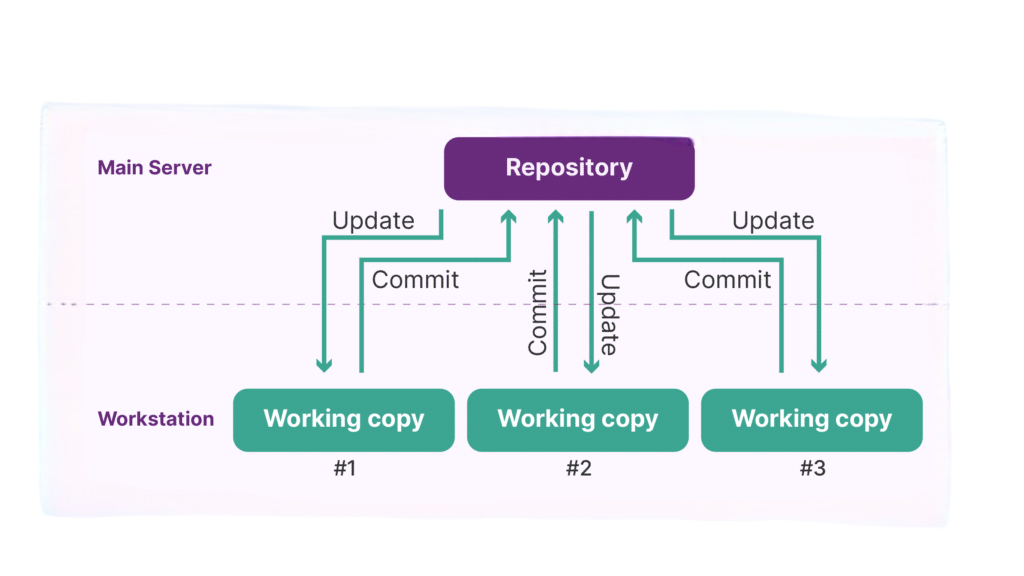
- HTML, CSS, JavaScript
- Version Control Systems
- Responsive Web Design
- Frontend Frameworks (React, Angular)
- Backend Basics (Node.js, PHP, Python)
- RESTful APIs
- Databases (SQL, NoSQL)
- Testing and Debugging
- Conclusion
HTML, CSS, JavaScript
HTML (HyperText Markup Language), CSS (Cascading Style Sheets), and JavaScript are the foundational technologies for web development. HTML provides the structure of web pages through a system of elements and tags. It defines headings, paragraphs, images, links, and more. CSS adds style, allowing developers to control the visual appearance of HTML elements such as color, layout, fonts, and spacing. JavaScript, on the other hand, introduces interactivity and dynamic content to the web. With JavaScript, developers can implement features like form validation, interactive maps, content updates without page reloads (using AJAX), and animations. Proficiency in these three technologies is essential for any frontend developer. A deep understanding of the DOM (Document Object Model) and how Web Designing Training interacts with it is crucial. Developers should also be familiar with modern JavaScript features such as ES6+ syntax (let/const, arrow functions, classes, promises, async/await) and concepts like closures, scope, and event handling. CSS advancements like Flexbox, Grid, and media queries are also vital for building responsive designs.HTML, CSS, and JavaScript are the foundational technologies of frontend web development. HTML (HyperText Markup Language) provides the basic structure and content of a webpage by defining elements like headings, paragraphs, images, and links. CSS (Cascading Style Sheets) is used to style these elements, controlling layout, colors, fonts, and overall visual appearance, making the webpage attractive and user-friendly. JavaScript adds interactivity and dynamic behavior to the site, enabling features such as animations, form validations, sliders, and real-time updates without reloading the page. Together, these three technologies work in harmony to build responsive, engaging, and well-designed websites that deliver excellent user experiences across different devices and screen sizes.
To Earn Your Web Developer Certification, Gain Insights From Leading Data Science Experts And Advance Your Career With ACTE’s Web Developer Courses Today!
Version Control Systems
Version control systems (VCS) like Git enable developers to manage changes to source code over time. Git allows you to track modifications, collaborate with other developers, revert to previous versions, Web Developer Skills and branch code for testing or feature development without disrupting the main codebase. Understanding Git basics like repositories, commits, branches, merges, pull requests, Flutter vs React Native and conflict resolution is critical. Platforms like GitHub, GitLab, and Bitbucket provide cloud-based repositories, enabling remote collaboration and integration with continuous integration/continuous deployment (CI/CD) pipelines. Version control fosters collaboration and ensures the integrity of codebases during development.

Version Control Systems (VCS) are tools that help developers manage changes to source code over time. They allow multiple people to work on the same project simultaneously without overwriting each other’s work. A VCS tracks every change made to the code, providing a history of modifications and enabling developers to revert to previous versions if needed. This is especially useful for debugging, collaboration, and managing large codebases. Popular version control systems like Git allow for branching and merging, which supports parallel development and experimentation without affecting the main codebase. Overall, Web Developer Skills VCS improves productivity, code quality, and team coordination in software development projects.
Responsive Web Design
- Ensures websites adapt to different screen sizes and devices.
- Improves user experience across desktops, tablets, and smartphones.
- Uses flexible grids, layouts, and images.
- Relies heavily on CSS media queries for styling.
- React in Props Reduces the need for separate mobile and desktop versions.
- Enhances accessibility and usability.
- Helps improve SEO by providing a consistent experience.
- Minimizes scrolling, zooming, and resizing on smaller screens.
- Supports faster loading times on mobile devices.
- Considered a best practice in modern web development.
- React is a JavaScript library developed by Facebook for building user interfaces.
- Angular is a full-fledged Frontend Frameworks developed by Google.
- Both are widely used for creating single-page applications (SPAs).
- React uses a component-based architecture for reusable UI elements.
- Angular follows an MVC (Model-View-Controller) structure for organized development Web Designing Training.
- React uses JSX, allowing HTML to be written within JavaScript code.
- Angular uses TypeScript, offering strict typing and advanced tooling.
- Both frameworks support two-way data binding (Angular by default, React via state management).
- React is known for its simplicity and flexibility, while Angular is opinionated and comprehensive.
- Both have strong community support and are widely used in enterprise and startup environments.
- REST stands for Representational State Transfer.
- RESTful APIs follow a set of architectural principles for web services.
- They use standard HTTP methods like GET, POST, PUT, DELETE.
- Data is typically exchanged in JSON or XML format.
- RESTful APIs are stateless, TypeScript with React meaning each request is independent.
- They provide a consistent way for clients and servers to communicate.
- Resources are identified using URIs (Uniform Resource Identifiers).
- RESTful APIs are scalable, lightweight, and easy to maintain.
- Commonly used in web, mobile, and cloud-based applications.
- Widely supported by backend frameworks like Node.js, Django, and Laravel.
- Ensures the application works as expected before deployment.
- Testing identifies bugs, performance issues, and code errors.
- Debugging is the process of locating and fixing those issues.
- Includes different types: unit testing, integration testing, and end-to-end testing.
- ReactJS Tutorial Tools like Jest, Mocha, Selenium, and Postman are commonly used.
- Automated testing helps speed up the development process.
- Debugging tools include browser developer tools and IDE debuggers.
- Testing improves code reliability, security, and user experience.
- Helps prevent regressions when new code is added or updated.
- Both are essential for delivering high-quality, error-free applications.
Would You Like to Know More About Web Developer? Sign Up For Our Web Developer Courses Now!
Frontend Frameworks (React, Angular)
Backend Basics (Node.js, PHP, Python)
WhileFrontend Frameworks focus on the client-side, having a grasp of backend development provides a more holistic understanding. Node.js is a JavaScript runtime built on Chrome’s V8 engine, enabling JavaScript to run server-side. It’s non-blocking and event-driven, making it ideal for building scalable network applications. PHP, widely used with content management systems like WordPress, is known for its ease of use and broad hosting support. Python, known for readability and versatility, powers frameworks like Django and Flask. Backend basics include handling HTTP requests, server-side rendering, form submissions, working with databases, and implementing authentication systems.Backend development is the foundation of how web applications function behind the scenes, and three popular technologies used in this space are Node.js, PHP, and Python. Node.js is a JavaScript runtime environment that enables developers to use JavaScript on the server side, making it ideal for building fast, scalable, React Components and real-time applications such as APIs and chat apps. Its non-blocking, event-driven architecture allows for high performance under heavy loads. PHP is a widely-used server-side scripting language that has been a backbone of web development for decades. It integrates easily with HTML and databases like MySQL, and powers popular platforms like WordPress. While not as modern as other options, PHP remains relevant due to its simplicity and widespread hosting support. Python, known for its clean syntax and versatility, is another powerful backend language. It is commonly used with frameworks like Django and Flask, making it suitable for building secure, scalable web applications quickly. Python is also popular in fields like data science, automation, and AI, giving it a broad range of use cases beyond web development. Together, Node.js, PHP, and Python represent a diverse toolkit for backend developers, each with its own strengths depending on project requirements.
Are You Interested in Learning More About Web Developer? Sign Up For Our Web Developer Courses Today!
RESTful APIs

Databases (SQL, NoSQL)
Databases store and retrieve data for web applications. SQL (Structured Query Language) databases like MySQL and PostgreSQL use tables with rows and columns and are ideal for relational data. NoSQL databases like MongoDB use flexible, JSON-like documents and suit projects with unstructured or rapidly changing data. Developers should understand basic database operations such as creating tables/collections, inserting and querying data, filtering, sorting, and using indexes. ORM (Object Relational Mapping) tools like Sequelize (Node.js) or SQLAlchemy (Python) simplify interaction with databases. Knowledge of how databases integrate with backend code and APIs is essential. Databases are essential components of backend development, used to store, manage, and retrieve data efficiently. There are two main types: SQL (Structured Query Language) databases Front End Developer Guide and NoSQL (Not Only SQL) databases. SQL databases like MySQL, PostgreSQL, and Microsoft SQL Server use a structured, table-based format and are ideal for applications requiring complex queries, relationships, and data integrity. They follow a fixed schema and are excellent for traditional applications like e-commerce sites, CRMs, and financial systems. In contrast, NoSQL databases such as MongoDB, Cassandra, and Firebase offer flexible data models like document,Web Developer Skills, key-value, column, or graph structures. They do not require a fixed schema and are better suited for handling large volumes of unstructured or semi-structured data. NoSQL databases are commonly used in real-time applications, social networks, and big data systems due to their scalability and performance. Choosing between SQL and NoSQL depends on the specific needs of the application, such as data structure, scalability, consistency, and development speed.
Testing and Debugging
Conclusion
In conclusion, understanding both frontend and backend development is essential for creating well-functioning, user-friendly web applications. While the frontend focuses on the visual elements and user interaction, the backend handles data processing, Web Developer Skills, server logic, Web Designing Training and database management behind the scenes. Technologies like HTML, CSS, JavaScript, React, Node.js, Python, and SQL/NoSQL work together to build dynamic and responsive websites. Tools for testing, debugging, and the use of RESTful APIs ensure reliability and scalability. Together, these components form the foundation of modern web architecture, where seamless collaboration between frontend and backend delivers the best possible user experience.



